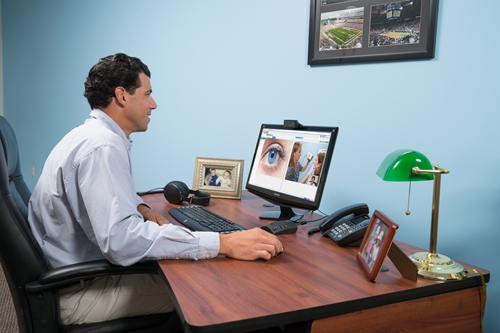Telemedicine technology has evolved considerably in the last few years due to innovative software development to sleeker hardware design. Vendors are working hard to ensure healthcare providers can effectively use telemedicine to increase healthcare access and bring down costs.
Over the next few weeks, we’ll uncover some of the most significant trends in clinical telemedicine technology and highlight what has changed since you might have last considered telemedicine for your organization.
One of the greatest improvements telemedicine has witnessed in recent years has been a change in how the systems actually operate. In the past, telemedicine required clunky hardware for video conferencing at both the sending and receiving sites. Not only was the hardware expensive, but sharing data also required information to be manually captured, stored and forwarded instead of being shared in real-time. These systems were also inefficiently integrated with modern health IT solutions, and increasingly represent an out-dated option for providers.
The most pivotal change in telemedicine systems has been the transition from hardware-based video Codecs to software-based encounter management solutions with embedded video conferencing technologies. These platforms are easier to install, integrate into daily workflows, and cost significantly less. This transition has completely altered the buying process for equipment and has opened up a world of opportunity for clinical telemedicine encounters.
Here’s why the most modern solutions are so preferable:
There are limitations with “in-band” telemedicine
The most glaring issue with a telemedicine encounter using in-band technologies (otherwise known as video Codecs) is that they were never designed for clinical telemedicine use, but rather standard business meeting needs. So the delivery of medical images and content using video Codec is just content sharing and does not allow for fluid transmission of real-time medical information. And more importantly, all the medical images and data shared during the consult disappears when the video call ends.
Here are 7 key limitations of using in-band technologies for clinical telemedicine examinations:
- All data goes away with call
- Data capture is NOT available without additional equipment
- Expensive Codecs required at both sending and receiving sites
- No interoperability between codec brands for stethoscope
- Stethoscopes required at each consulting site
- EMR integration is NOT available without additional equipment
- No realistic mobility – remote consultant is tethered to the specific location of their hospital bulky video system
The benefits of today’s telemedicine software
Older systems are especially lacking when compared with the latest telemedicine solutions available. Software-based telemedicine solutions offer more flexibility, increased functionality, and ease of integration all at a lower cost.
Here are 11 reasons AMD’s software-based telemedicine solutions improve clinical workflows and streamline IT support:
- Browser-based access, no software to download and no license needed for remote docs
- Keep data collected after consult ends
- More options for connecting integrated medical devices
- Codec optional – NOT required. HD Webcam/ SW VTC
- Codec independent
- Stethoscope hardware is not required at consulting site
- Consult from anywhere with only a browser and headphones
- Unlimited number of consulting physicians without additional cost
- Real-time streaming of medical images is standard part of the software
- EMR integration available
- Over 70 percent reduction in costs from alternative hardware Codecs
Some organizations have realized immense benefits by opting for the most up-to-date telemedicine system. These include financial savings as well. The Carle Foundation Hospital, a not-for-profit provider in east-central Illinois has offered telemedicine services since the 1990s, and recently looked to add the technology to a half-dozen new sites. It would have cost the Carle Foundation roughly $95,000 to install a traditional in-band system to get these sites online. A more modern solution, such as AMD’s AGNES software, cost the same organization roughly $22,800. Furthermore, legacy in-band systems require pricey annual maintenance fees. You can often purchase brand new software-based telemedicine solutions for less than those annual maintenance fees.
A software-based telemedicine system promotes efficiency as well, further driving the possibility for savings. As such, the most current solutions available to providers are more desirable and powerful than their predecessors.
In Part 2 of this series, we’ll explore how telemedicine software integrates with EMRs and why this is such an important new capability. The next two articles part of this series will be:
- Your Second Look at Telemedicine – Part II: From checking the box for EMR integration, to actually doing it.
- Your Second Look At Telemedicine – Part III: Increased mobility requirements and additional specialties.





